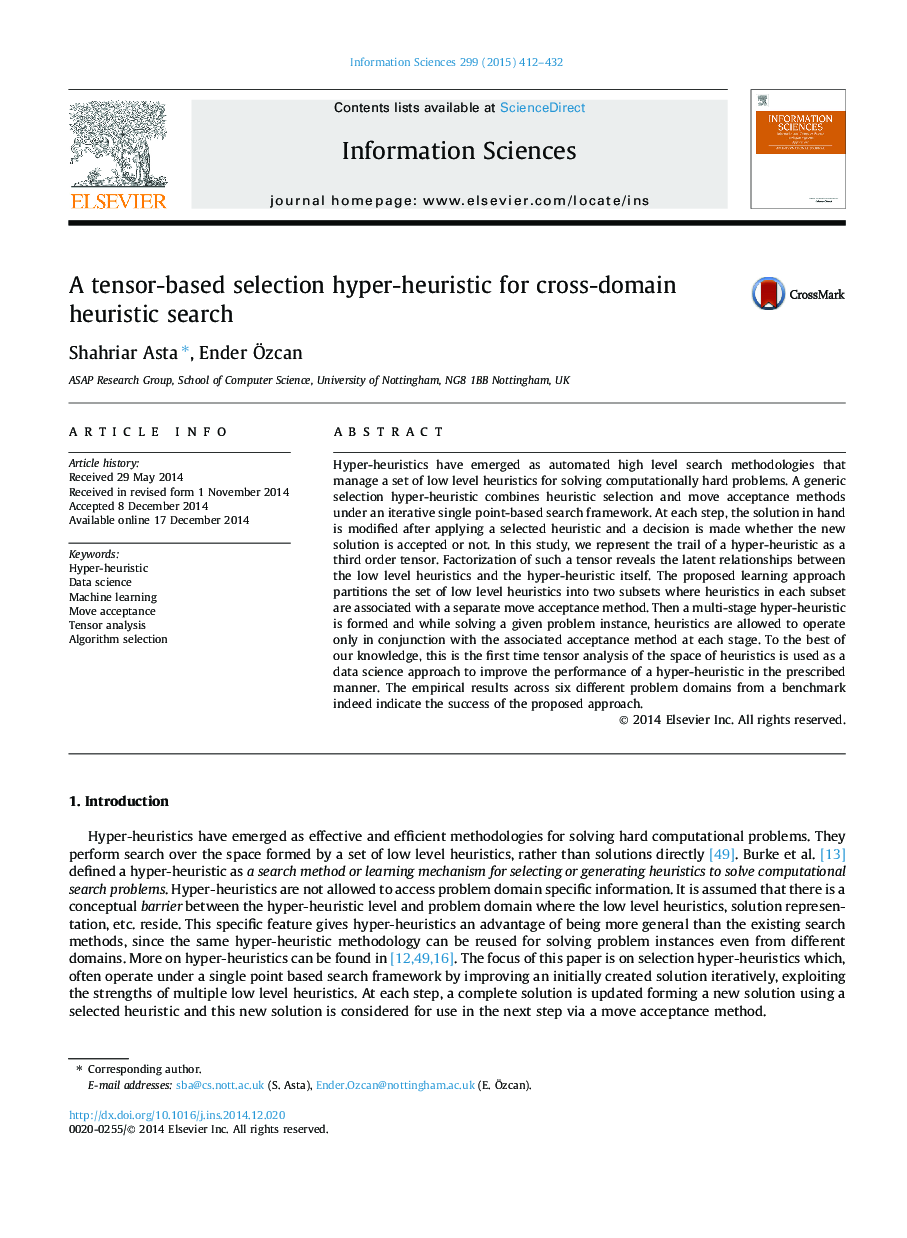| Article ID | Journal | Published Year | Pages | File Type |
|---|---|---|---|---|
| 392106 | Information Sciences | 2015 | 21 Pages |
•Presented a novel method to improve the performance of a hyper-heuristic approach.•Represented the trail of a hyper-heuristic mixing heuristics as a 3rd-order tensor.•Analyzed tensors to discover the links between heuristics and the hyper-heuristic.•Obtained competitive results to the best known hyper-heuristics across 6 domains.
Hyper-heuristics have emerged as automated high level search methodologies that manage a set of low level heuristics for solving computationally hard problems. A generic selection hyper-heuristic combines heuristic selection and move acceptance methods under an iterative single point-based search framework. At each step, the solution in hand is modified after applying a selected heuristic and a decision is made whether the new solution is accepted or not. In this study, we represent the trail of a hyper-heuristic as a third order tensor. Factorization of such a tensor reveals the latent relationships between the low level heuristics and the hyper-heuristic itself. The proposed learning approach partitions the set of low level heuristics into two subsets where heuristics in each subset are associated with a separate move acceptance method. Then a multi-stage hyper-heuristic is formed and while solving a given problem instance, heuristics are allowed to operate only in conjunction with the associated acceptance method at each stage. To the best of our knowledge, this is the first time tensor analysis of the space of heuristics is used as a data science approach to improve the performance of a hyper-heuristic in the prescribed manner. The empirical results across six different problem domains from a benchmark indeed indicate the success of the proposed approach.
